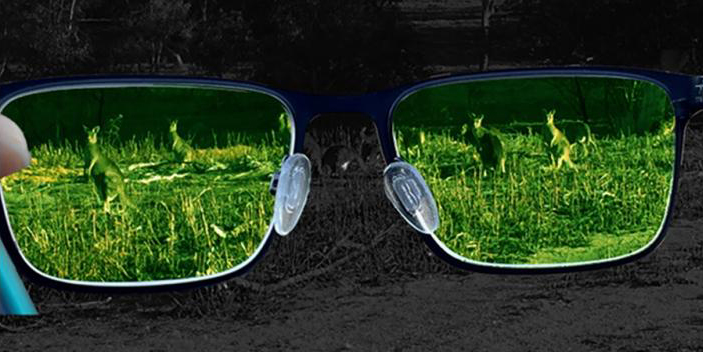Infrared imaging by ultrathin nanocrystal layers

Researchers demonstrate the conversion of infrared images to the visible, using ultrathin and transparent GaAs nanocrystals
Infrared imaging is a crucial technique in a multitude of applications, including night vision, autonomous vehicle navigation, optical tomography, and food quality control. Conventional infrared imaging technologies, however, require the use of materials such as narrow bandgap semiconductors, which are sensitive to thermal noise and often require cryogenic cooling.
Now researchers from the Australian National University, Nottingham Trent University, and collaborators worldwide have managed to demonstrate a compact all-optical alternative to perform infrared imaging in a metasurface composed of GaAs semiconductor nanoantennas, using a nonlinear wave-mixing process.
As reported in Advanced Photonics, they experimentally show the upconversion of short-wave infrared wavelengths via the coherent parametric process of sum-frequency generation. In this process, an infrared image of a target is mixed inside the metasurface with a strong pump beam, translating the image from the infrared to the visible in a nanoscale ultrathin imaging device.
The designed metasurface was fabricated and transferred to a transparent glass, forming a layer of nanocrystals on the glass surface. In the experiment, an IR image of a Siemens-star target illuminated the metasurfaces. The IR image of the target was mixed with a second beam and, through the SFG process, up-converted to a visible wavelength at 550 nm (green light).
The visible green images, captured with a conventional camera, correspond to different transverse positions of the target, including the case when the target was fully removed from the path of the IR beam and the SFG emission from the metasurface was observed. Despite different parts of the IR signal beam being up-converted by independent nanocrystals composing the metasurface, the images were well reproduced into the visible.
The proposed metasurface-based IR imaging approach offers novel opportunities not possible in conventional up-conversion systems. For example, the use of counter-propagating excitation beams, as well as incidence at different angles and, most importantly, multi colour IR imaging by an appropriately designed metasurface.
'Infrared upconversion imaging in nonlinear metasurfaces' by Rocio Camacho-Morales et al; Advanced Photonics, 3(3), 14th June 2021


































